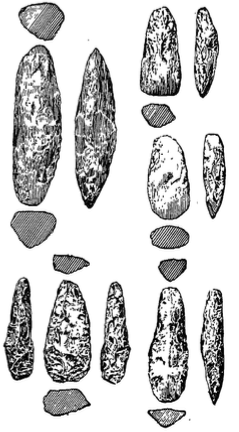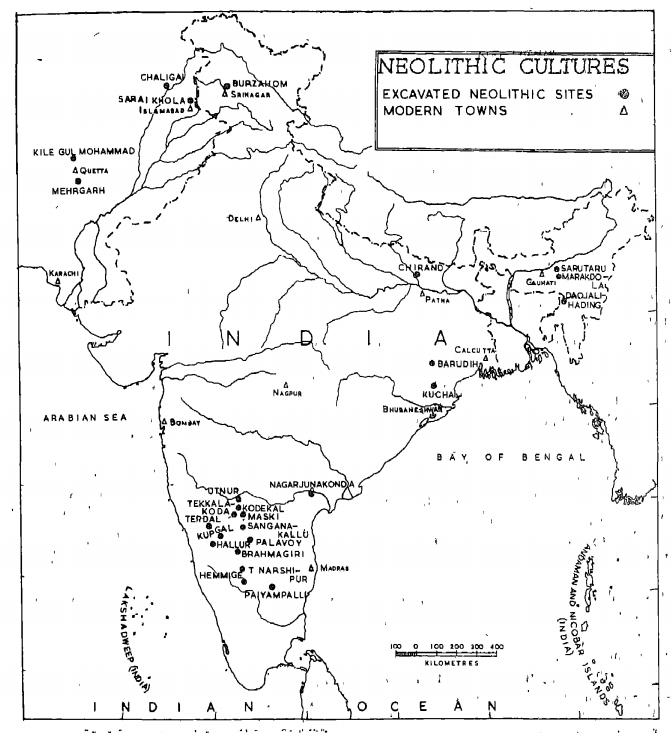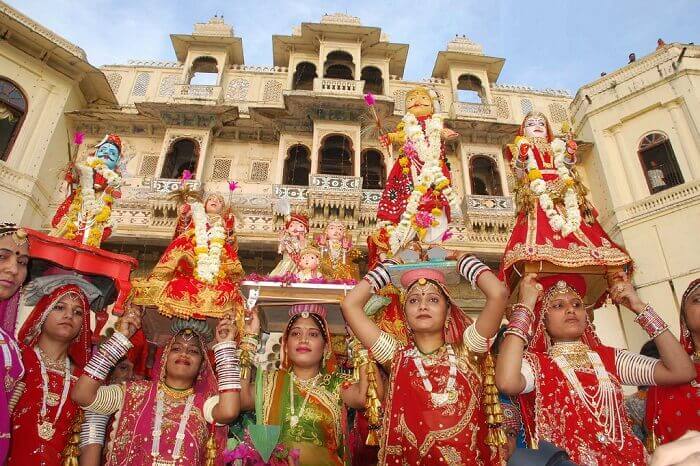Neolithic Age:
Neolithic or new stone age, which followed mesolithic age was the last phase of stone age. The Neolithic period began around 10700 to 9400 BC in Tell Qaramel in Northern Syria. In South Asia the date assigned to Neolithic period is 7000 BC and the earliest example is Mehrgarh Culture.
Neolithic Revolution:
- The human settlements in the Mesolithic era got more sedentary and people began settle down in agricultural communities which led to establishment of villages.
- Man for first time domesticated cattle, sheep and goats.
- As efficiency of agriculture improved, man was able to produce surplus food. As a consequence, some people moved away from agriculture and new occupations like dancers , musicians, masonry came up.
- The people of this age used tools & implements of polished stone. Neolithic tool kit was composed of heavy ground tools – pestles, mortars, grinders and pounders – as also axes and sickles which have a characteristic sheen on them, the result of harvesting wild or domesticated plants and grasses.
The use of pottery and the wheel and the subsequent invention of crafts like spinning, weaving and bead-making also serve to demonstrate the uniqueness of the neolithic phase. This transition from hunting-gathering to food production is called the Neolithic revolution.
Causes of Neolithic Revolution:
Factors that pushed humans in vastly separated parts to adopt agriculture and animal domestication included:
- Climatic change at the beginning of the holocene period,
- Increasing population density
- Evolving cultural and technological strategies of human groups.
Features of Mehrgarh Neolithic Culture:
Mehrgarh is located on bank of the Bolan River, a tributary of the Indus, at the eastern edge of the Baluchistan plateau overlooking the Indus plain. It is considered as the oldest agricultural settlement in the Indian subcontinent.
- The main domesticated animals in Mehrgarh were cattle, sheep, goat and water buffalo while the main cultivated plants were wheat and barley.
- Houses made in mud and mud-bricks, created rooms to store grains, buried dead under floors of houses where they lived, used ornaments of steatite, turquise, sea shells etc.
- Domesticated cotton for the first time. Used pottery decorated with images of birds, animals. Learnt use of making stone beads, copper smelting, timber, terracotta, commercial transactions.
- The first evidence in human history for the drilling of teeth in a living person was found in Mehrgarh.

Neolithic Age in Rajasthan
As you can see in map, there are no significant neolithic sites, that fall in modern Rajasthan.


